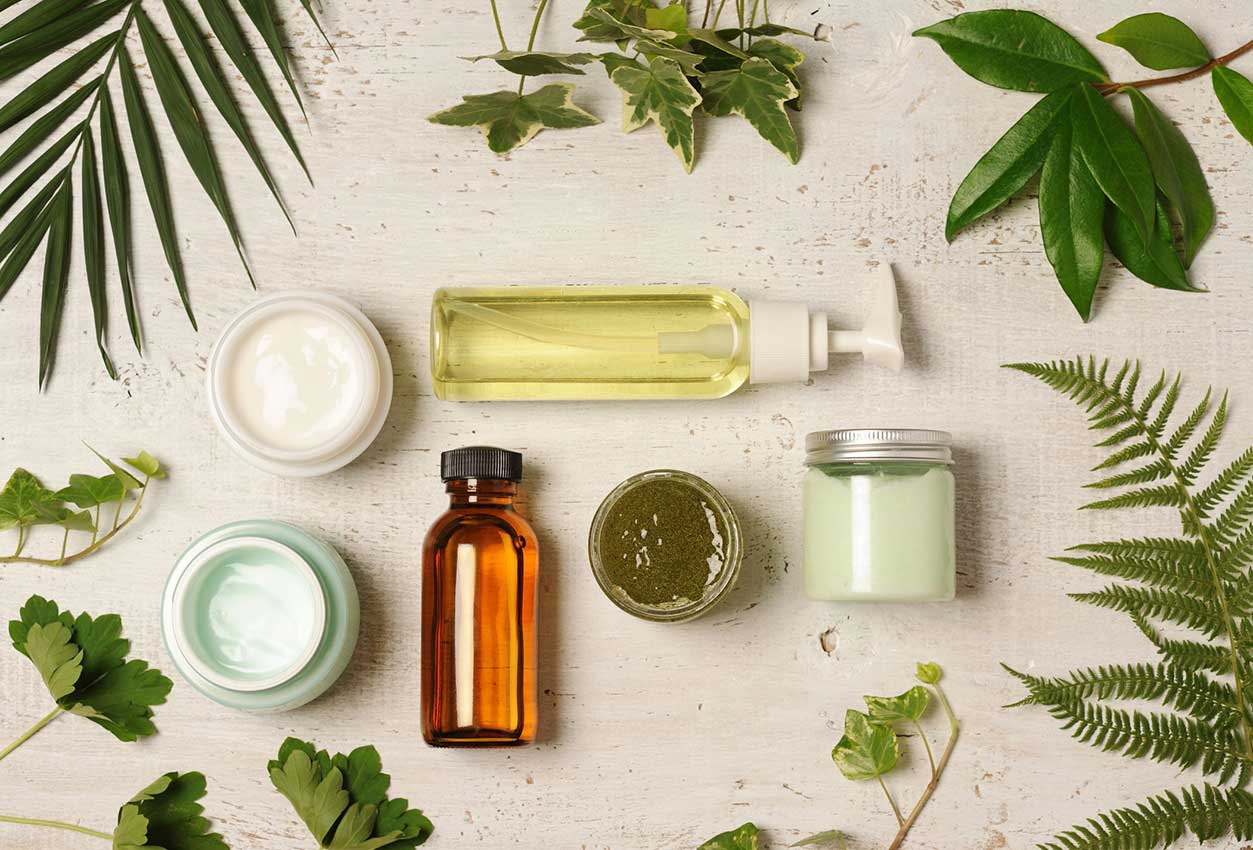The Truth About Clean Beauty & Why We Should Not Ignore Science

There isn’t a day that goes by that I don’t receive some sort of pitch about a new clean beauty product that PR really wants me to write about: A new clean cream. The latest clean lip balm. An all-natural serum. A toxic-free eye cream.
But what does clean beauty really mean?
I recently discovered Charlotte Palermino, a freelance beauty writer and co-founder of Nice Paper, a weekly newsletter about cannabis, who — via Instagram — raises many legitimate questions about clean beauty. After following her for some time, she has convinced me to look a little closer at how and why brands claim to be “clean,” what is clean beauty, is the industry even regulated, and most importantly how it affects us and our skin. Because after all, looking into mother nature is beneficial but could also be dangerous.
No Regulatory Body
Clean beauty is not regulated. The companies that sell clean beauty are basically making their own rules, and we all know that those rules are based on the bottom line. Between 2017 and 2018, the natural skin care market grew by 23% to $1.6 billion, accounting for about a quarter of the $5.6 billion annual skin care sales in 2018. JAMA Dermatology published an editorial in late 2019 where dermatologists slam “arbitrary descriptions of products as “clean” or “natural” are not regulated, and many of these products contain high concentrations of ingredients that can cause irritation and allergies.”
“We wanted to shed light on the fact that the ‘clean beauty’ movement is more of a business model and marketing tool that plays on the trend of people wanting to use natural rather than synthetic products right now,” Dr. Bruce Brod of the University of Pennsylvania in Philadelphia, who co-wrote the editorial, told Reuters.
Consumer Marketing vs Solid Science
Many clean beauty brands claim that they do not use any toxic ingredients and their products are chemical-free, but is there any scientific evidence of that? What exactly are we being protected from? Are the products we have used really harmful, or is it just another marketing spin to get us to buy the often very expensive clean beauty creams. Take parabens — which stabilize products and make them last longer — for example. Most clean brands have removed them from their ingredient list not because there is specific scientific evidence that they cause harm, but because consumers have been convinced that they are bad and don’t want to buy them. (Side note: parabens are highly contested preservative group; there are studies that link parabens to damages in the endocrine system but further detailed testing is needed in humans. BUT, it’s also worth mentioning that the European Commission banned several types of parabens for use in personal care products: isopropyl-, isobutyl-, phenyl-, benzyl-, and pentylparabens. All five are still approved for use in the United States.)
But my point is different here.
Nicola Davis wrote an article on clean beauty for The Guardian a year ago and asked Tiffany Masterson, the founder of Drunk Elephant, why she has cut out parabens from their products, and she told him “I don’t think they are bad for you. Consumers don’t want them.” Following the consumer’s money, big brands like Sephora launched its “Clean at Sephora” initiative in May 2018, citing in-house research that revealed that 54 percent of its skin care shoppers think it’s important that their products “have a point of view on clean.” CVS announced it was removing parabens and other ingredients from 600 of its house-branded products by the end of 2019.
Consumer marketing certainly knows how to create fear out of insecurity, and then create a solution for that fear. Enter clean beauty. We are made to believe that clean beauty products are superior, but we must take a more balanced approach to choosing what to use.
Natural Doesn’t Always Mean Safe
Just because an ingredient is found in nature, doesn’t mean it’s safe. Take essential oils for example. Did you know that chemicals in lavender and tea tree oil have an effect on your endocrine system and can alter your hormones? According to The Endocrine Society, “a new study lends further evidence to a suspected link between abnormal breast growth in young boys—called prepubertal gynecomastia—and regular exposure to lavender or tea tree oil, by finding that key chemicals in these common plant-derived oils act as endocrine-disrupting chemicals.” Think about how many clean brands have lavender and tea tree oil in them.
In addition, essential oils from disreputable sources may be filled with fillers, processed with chemicals, unethically sourced, or grown using pesticides. Greenwashing– marketing spin in which green PR and green marketing are deceptively used to persuade the public that a brand is environmentally friendly and therefore better — is also a problem. Harper’s Bazaar reported in late 2019 that a 2008 study by the Organic Consumers Association found undisclosed carcinogenic petrochemical ingredients in more than 40% of products tested that claimed to be natural. And in 2016, the Federal Trade Commission filed complaints against four companies that marketed their personal care products as “all natural” or “100 percent natural” when the products contained a number of synthetic ingredients.
So, what’s the point of all of this? To educate oneself, tread lightly when it comes to clean beauty and don’t completely discard scientific beauty. Perhaps finding a balance between both?
Anna Marevska is the Editor of FashionFiles. She is responsible for the overall editorial direction of the site and writes runway stories, designer profiles, and trend reports.

